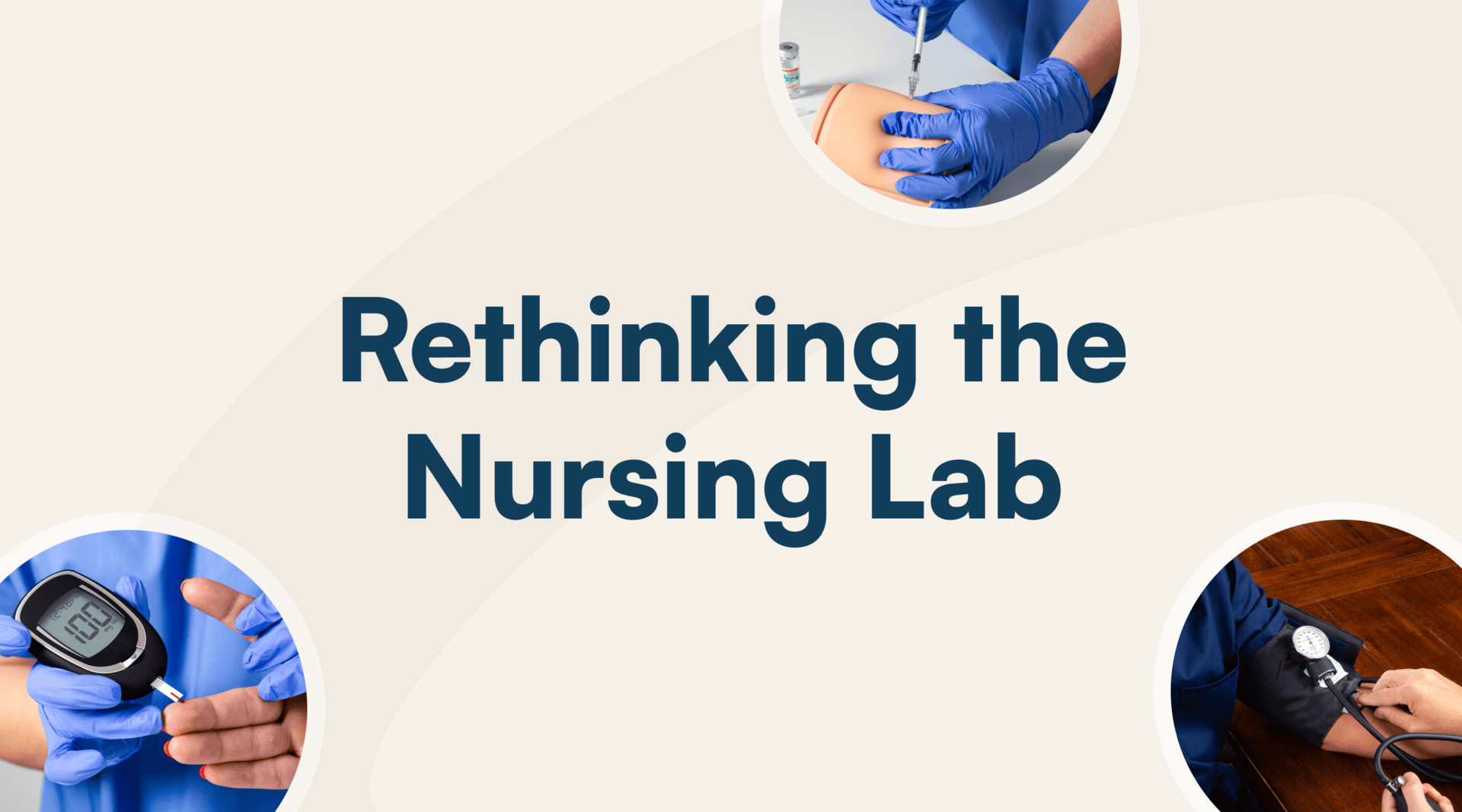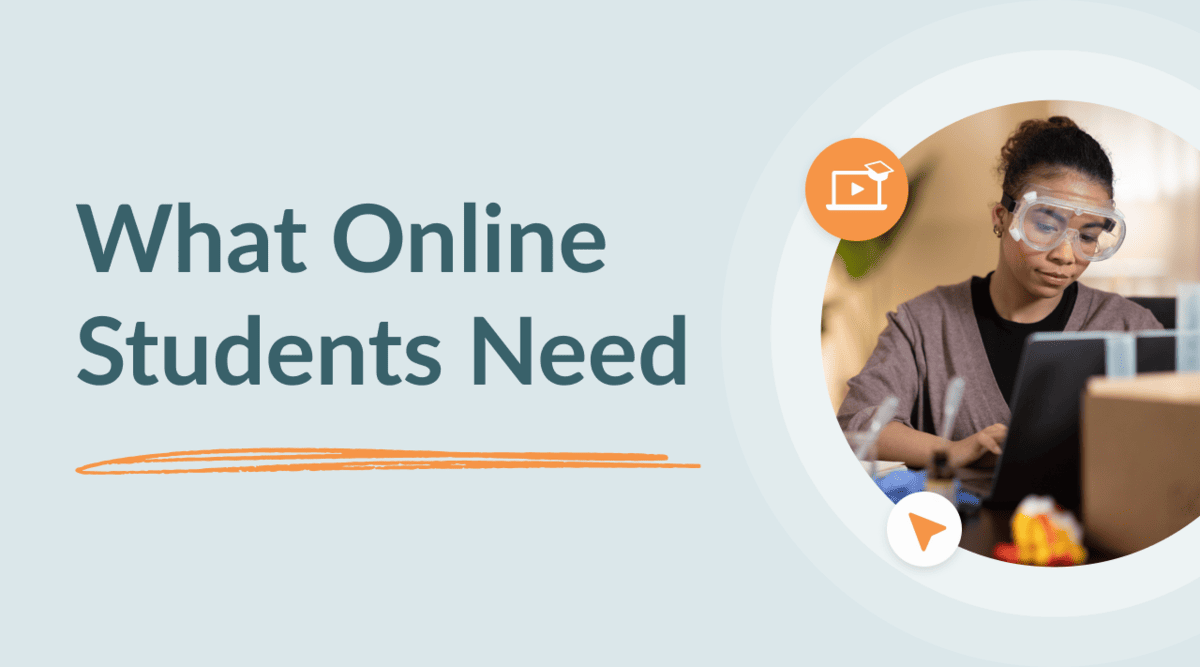And Why It Makes Sense
Seat time. On campus. 4 years.
Luckily, the road to graduation and degree look a lot different today than it used to. No longer a rigid, straight line path, the learning journey for many of today’s students has starts and stops, bumps, roadblocks, and detours — and as a result, requires a learning experience unconstrained by time and physical location. Online learning has opened the door to new opportunities, such as finishing bachelor’s degrees, continuing education, and career advancement for those who never had an opportunity to start.
Today’s learners, like many of the students who take your online lab courses, are nontraditional, working, and first-generation students looking to earn degrees, grow their skills, and advance their careers. In fact, according to the NCES, about 73% of students currently enrolled in higher education fit into a broader definition of nontraditional student, which means they have distinct, individual, and pressing needs.
Who’s Learning Online & What They Need
Knowing what your students really want starts with understanding who your students really are. In general, today’s online students can be characterized by the following:
- More women than men enroll in online degree programs, especially at the undergraduate level. A survey by the Instructional Technology Council reported that the number of women enrolling in distance learning programs at 2-year colleges was at a record high: 63% of online course registrants.
- While the highest percentage of online learners fall between the ages of 25 and 29, online courses tend to attract a larger share of older, “nontraditional” students.
- Unlike those attending more traditional on campus classes, about half of online learners are married and have children under the age of 18.
- Nearly 40% of undergraduate students and 60% of graduate students work full-time while attending online colleges and universities.
Most of these descriptions fall into the nontraditional category. The National Center of Education Statistics uses specific characteristics to classify nontraditional students, including:
- Full-time workers, part-time students
- Older students who delayed college or are seeking a second degree
- Students who are financially independent
- Parents to at least one dependent & single parents
Your online students might also be miles away — in another country or a very rural part of your state. That’s the beauty of online learning. It has the power to expand opportunities and create a more accessible learning environment for nearly everyone. That also means your online labs will be filled with a plethora of diverse learning needs. So now, with a clearer picture of who your online students are and why they choose to learn online — here are some ways to better meet their needs.
- Support Flexibility & Convenience
- Provide Clear & Comprehensive Guidance
- Engage Students in Active Learning
- Promote an Accessible Digital Experience
- Build Strong Course Community
The Need: Flexibility & Convenience
Flexibility and convenience are two of the most important deciding factors students use when choosing between online learning and traditional classroom instruction. An online learning or hybrid learning environment gives students more flexibility than a traditional classroom. In a physical classroom, students are typically expected to attend class and take tests at a specific time and location. Online courses allow students to attend a lecture from home and complete a test, assignment, or lab by a certain deadline — removing the need for both a location and time restriction. Because the work can be done asynchronously, students can complete the course material on their own time so they can have more time for other classes, their job, and family responsibilities.
“I found hands-on labs at home to be extremely beneficial. They offer time flexibility and a re-do if needed to better understand the concepts and experiment results. I genuinely learned more than I have in on-campus labs.”
– STUDENT RESPONSE TO THE ANNUAL REPORT: STATE OF ONLINE LABS IN 2023
According to the 2022 Voice of the Online Learner, nearly 60% of students opt for online education because they don’t have to go to campus, at least not consistently. Most online students reported they prefer an asynchronous (69%) and fully online program with no required campus visits (79%). This allows students to learn at their own pace. Instead of sitting through an hour-long synchronous lecture, students are able to pace their own learning — speeding up or spending more time on materials as needed.
How to Meet the Need: Enable Asynchronous Learning
Mckinsey surveyed more than 7,000 students in 17 countries to find out which elements of online higher education they valued most. Of 11 online learning features, students identified these as the top three: recorded classes & instruction and the ability to watch them on demand, easy access to online study materials, and timing flexibility that enables students to work and study on their own schedule.
As one student has said, “I loved how the class only met online to discuss the lab and procedure we would be doing, but the lab itself was performed at one’s own time. The meeting video was recorded and made available to rewatch for anyone who needed it and the professor was available for other questions. The lab handouts had all the directions and made it simple and easy to understand. I genuinely preferred my online lab experience to any in person lab experience I have had thus far.”
Other asynchronous learning activities could include recorded demonstrations of experiments, reading and research projects, course discussions, problem-solving exercises, and peer reviews that require student-to-student feedback. However, when you enable learning that is this flexible, you’ll need to plan ahead — and you guessed it, provide resources, guidance, and clear deadlines in order to keep students on track.
The Need: Clear Guidance & Support
Even online, the basics still matter…and probably all the more for online students. Features that have always informed a traditional learning experience, such as timely content, course structure, and guidance are non-negotiable. Just ask Cheston Saunders, a biology instructor at Southeastern Community College, who says that anticipating student questions is crucial for his online students’ success.
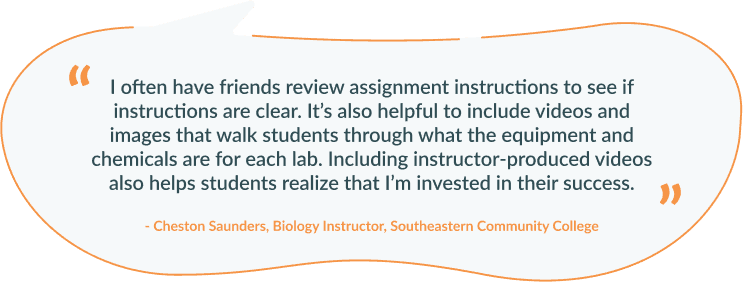
As further proof, students in 16 of the 17 countries surveyed by McKinsey said that having a very well-organized online course with a clear path and a step-by-step guide to achieving their goals was among their five most important elements.
You know best that students, in general, struggle with time management, and many have probably never taken an online lab course. Students coming into your online lab course will each have a different level of requisite knowledge and experience. How you set the stage for your course will impact students’ success.
How to Meet the Need: Provide a Clear Roadmap
Providing clear expectations and guidance for how and when to complete course activities is important. So consider the first few days of your online course an opportunity to set them on the right path:
- Make sure a syllabus and online rubric tied to the course’s learning outcomes are highly visible. It’s important to clearly state learning outcomes for the courses and how they’ll be assessed so you’re setting the right expectations for students.
- If you’re using hands-on lab kits, be sure to notify students in advance so that they can order and receive them before the course starts.
- Remind students how and where to find course material, and explain how that material aligns with the objectives of the course. Keep due dates for important labs and assignments at the top of students’ minds.
- Provide resources, safety protocols, and step-by-step instructions for each experiment that include multimedia (images & videos) — because everyone learns differently! — and be sure to include how long each may take so they can plan accordingly at home.
- Anticipate potential questions from students and prepare a quick FAQ resource for each experiment — especially helpful for students new to taking labs online.
- Keep yourself available through chat, email, or virtual office hours — and actively invite each student to participate in a video check-in with you.
- Use tools to share ongoing feedback with students so they have an opportunity to improve for the next lesson.
Consider all the quick, one-off questions, tips, and on-the-spot feedback you provide to students during on-campus labs. Online students don’t have the same access to you, and because of that, support needs to be intentional and plentiful.
Plus, you can use tools like a lab management platform to make content delivery, evaluation, and providing feedback easier. With tools like this, you can focus your time on giving quality ongoing feedback to help students improve, which is proven to motivate students to continue engaging. As an added bonus, you can also leverage assessment analytics in those tools, which help you identify students who may be falling behind in certain areas — giving you the opportunity to provide an extra layer of guidance that gets them back on track.
The Need: Active & Engaging Learning Activities
While many of your labs and learning activities may be asynchronous to better support your online students, that doesn’t mean some of the high-impact practices often found in traditional classroom instruction are off the table. In that same McKinsey study, one of the main hesitations students cited about enrolling in fully online courses was “getting bored if the learning experience is not motivating.”
Many students want an online learning experience comparable to that of the in-person experience, which means you’ll have to create an online lab experience that can engage students as if they were in the classroom. This presents a unique challenge for your course — one that relies on hands-on experimentation. When you use hands-on labs, you’ll be able to engage students in a way similar to how you would in a campus lab. And the proof is in the pudding. More than 80% of students say their online labs made their course more engaging. Through the process of conducting an experiment — from setting up to logging observations and analyzing results — each student will have an opportunity to engage just a bit deeper with your course material in a way that suits them and that leads to stronger critical thinking and problem solving skills.
How to Meet the Need: Lean into Experiential & Hands-on Learning
A form of experiential learning, hands-on science labs expose students to the process of manipulating, observing, exploring, and thinking about science using concrete materials. They use tools, equipment, tests, and procedures to work through the scientific method. This approach relies on ready-made science lab kits that contain lab-grade materials and equipment at a scale so that students can safely handle them without direct supervision. And both instructors and students agree that the hands-on approach is effective. Nearly ¾ of surveyed students and instructors said at-home hands-on labs were comparable to an in-person lab experience.
We know what you might be thinking…what about virtual labs? Won’t those work just as well? The short answer is no. Unfortunately, virtual or simulated labs alone aren’t going to cut it. Research has found that virtual science labs aren’t as effective for students when they’re the sole format for labs in your course. In fact, 74% of students who only participated in virtual science labs said they would have felt more confident applying what they learned in real-world situations if their labs had a hands-on component. As for instructors, 68% who used virtual science labs alone said this lab format was NOT comparable to an in-person lab experience. That’s why using a blend of hands-on with virtual science labs is best.
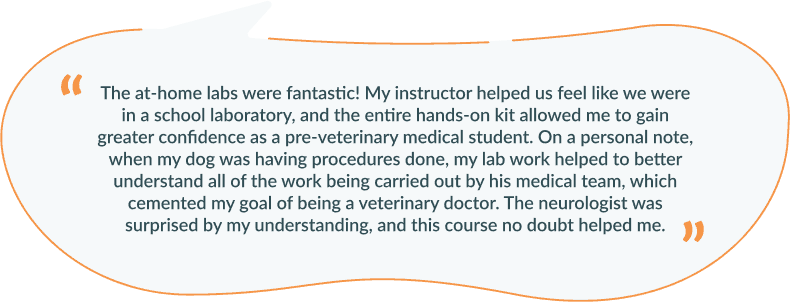
Studies show that student participation in hands-on laboratory experiences vs computer simulated experiences actually improves students’ attitudes and interest in the topic being taught, keeps students more engaged, and leads to new skill building and better performance. And additional findings from that Mckinsey survey found that virtual reality (VR), simulations, and sophisticated visual content are not highly valued by most students.
| Case Study Spotlight: Brightpoint Community College Professor Blagojevic focused on designing a real-world lab experience online. She was able to select hands-on experiments and lessons from Science Interactive that aligned with her course learning outcomes. In one of her first labs, students learn to measure density. Having the ability to use lab grade beakers and measure the liquids gave students a more enriching experience than they would have had through simulation alone. Unlike simulated labs, students have the opportunity to see how mistakes change the course of the experiment, and how to think through solutions. While students perform the experiments independently from home, Professor Balgojevic sorts them into groups to work through lessons together so that they can collaborate and learn from each other throughout the course. |
The Need: An Accessible Digital Experience
We mentioned a lab management platform earlier, which brings us to technology. To facilitate effective online lab courses, the technology you employ matters. More often than not, the tools we choose for learning online can create barriers unintentionally.
Consider this. The first interaction with any tool can color a student’s perception of how easy (or hard) the tool is. If a student can accomplish a task in a new platform the first time they use it, then the tool has high usability. That small achievement has big impact. They will be more inclined to use it in the future rather than view it as a barrier or challenge. Introducing tools with high usability will drive better adoption and usage across your diverse student needs.
It’s also important to make sure all of your technology is fully accessible for all kinds of users. When thinking about accessibility and the kinds of tools to use in your course, ask these questions:
- Can the user easily perceive the elements presented in the tool?
- Can they operate the various functions of the tool easily?
- Can they easily consume and understand the content presented in the user interface?
- Is it mobile first? Can it be used from anywhere?
How to Meet the Need: Create a Seamless Digital Experience
Too many logins, hard-to-use interfaces, and tools that don’t work for everyone…the bottom line is: Don’t let technology become a barrier to participation and engagement.
Instructors will be inundated with emails from students and spend more of their time on tech troubleshooting than on actual teaching. Rather, find technology and tools that are intuitive to students. The best employ features and interfaces most people are familiar with from other sites and online experiences. Don’t rely on a variety of disconnected tools that aren’t integrated with the LMS. This will only create additional barriers and more work for you and your students, potentially scaring them away from participating in the course to their fullest.
In the end, your online students are looking for the quickest way to achieve their goals and expect speed at all points in their online learning experience, especially when it comes to technology.
The Need: A Caring Network
Finally, Because they’re not physically present in a lab, online students lose more of the opportunities to interact, collaborate, and receive real-time feedback from instructors — all of which can create a sense of isolation and impact a students’ confidence and morale.
As humans, we’re social beings. We need social connection and interaction to deepen our learning experience. That connection builds trust to share different perspectives and fosters a sense of community, which can lead to increased student engagement, motivation, and performance.
When students feel they belong to a class community, they are more likely to be motivated to complete class work, feel safe enough to contribute to discussions, and be open to feedback that can help them improve. Many factors can influence students’ sense of belonging and community, including student-faculty & student-student interactions, how expectations are communicated, how accessible course materials and technologies are, and the range of perspectives represented in course materials.
How to Meet the Need: Strengthen Course Community
Like many aspects of teaching, helping students develop a sense of belonging and community impacts learning in both face-to-face and online courses, but attending to these dimensions in an online lab takes intentional planning. Online instructors must take steps to connect with their students via digital channels and compensate for the loss of natural face-to-face cues and communication. In addition to being the subject matter experts, you now step into the role of community builder in order to create meaningful moments for interaction and collaboration online. Here are some impactful ways to do it.
- Create online lab partner pairs, similar to lab partners in campus labs. Pair up students at the beginning of the course, so each student has built-in peer support and someone they can go to — besides you — to ask questions and share experiences. Encourage them to communicate via course chat, text, and video.
- Use your LMS to engage your students in a course discussion about a particular lab as part of the class curriculum to help them not only improve their critical thinking skills but also encourages them to engage with others in the class in a meaningful way. Establish this conversation as a forum to connect with each without the pressure of a graded assignment. Send students off into their own small-group discussions to share their lab results for particular experiments on your course discussion boards; have them compare and contrast results and hypothesize why there might be differences.
- Create a Q&A board for the class so they can post questions and crowdsource responses.
- Host virtual office hours to make yourself available to students, especially important when you don’t see them face-to-face throughout the week. Virtual office hours can be as simple as web conferencing with an individual or small group of students. Or it could involve adding a chat for those students, who just want to have a brief connection.
- Give them space to connect virtually via group projects and optional synchronous meetings to keep them engaged.
- Have students share videos and photos of their experiment setups and their thoughts on what they hope to get out of your course.
When there isn’t an opportunity for in-person interaction, being deliberate about creating those opportunities in an online environment will create a stronger sense of connection — and this is something your online students crave.
“It was a lot of fun to turn my home into a science lab to successfully further my studies and become a dental hygienist. I would definitely recommend this for anyone who’s a science major and wanting to get their courses completed.”
– Student
An Online Lab Experience that Serves Today’s Students
In order to attract, retain, and expand opportunities for science education, it’s important to listen to your students’ and evaluate the broader online learning experience at your institution, in your program, and for your course.
Successfully developing or evolving an online science program often begins with finding out what students like about the programs an institution already offers. Guided by the core attributes presented here, you can canvass students to determine the specific areas where online programs are gaining high marks and those that underperform. At the same time, this approach will help you identify which groups of students are more likely to enroll in your online science courses — again, valuable insight so you can be sure you’re meeting their needs. In the end, it becomes the work of your institution and instructors to implement the strategies that ensure online science labs deliver the most meaningful and effective experience possible and, ultimately, better outcomes for students.
If you want to create a more engaging, authentic lab experience for your online students, we can help.
Infographic

Discover more articles
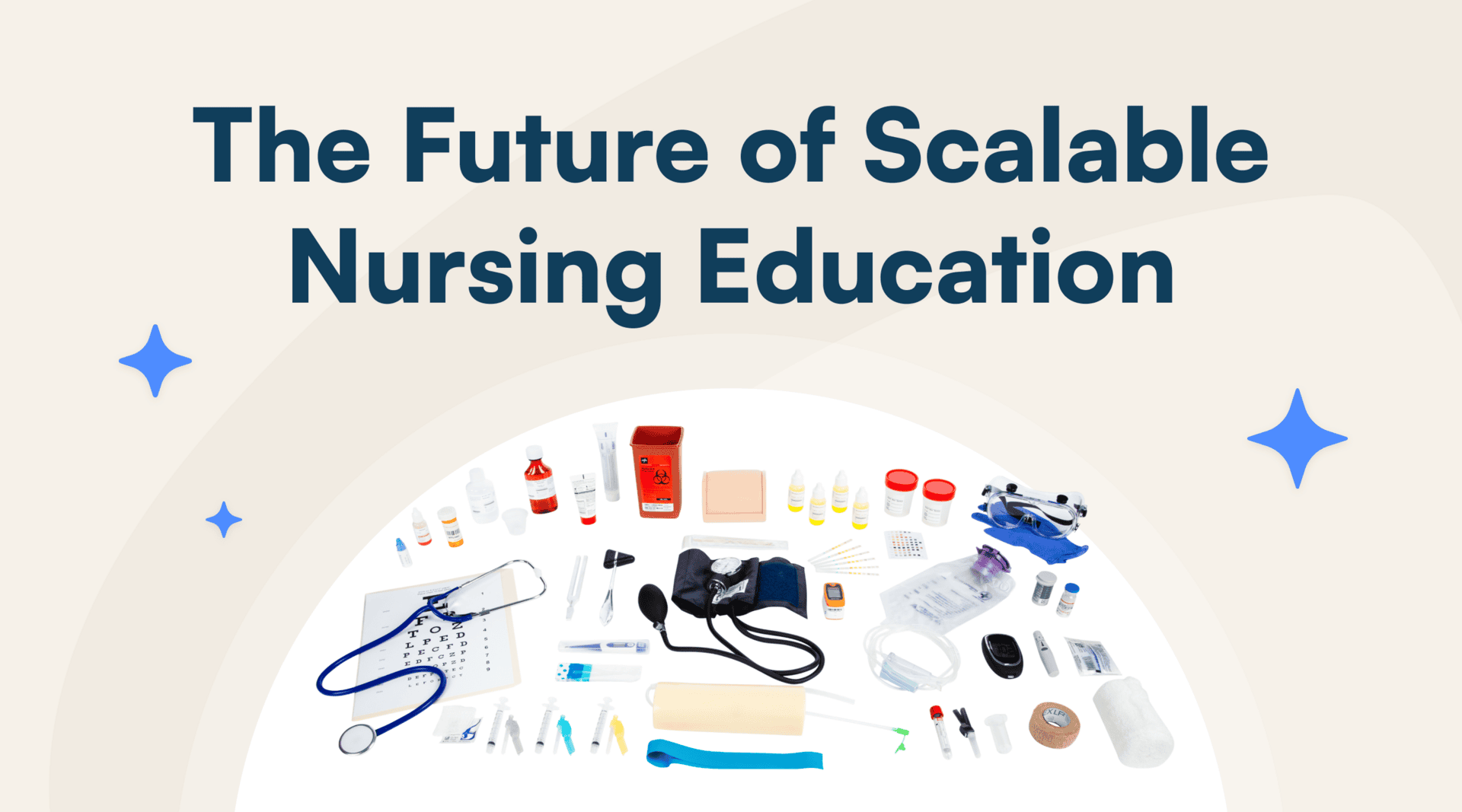
Science Interactive Launches New Nursing Fundamentals
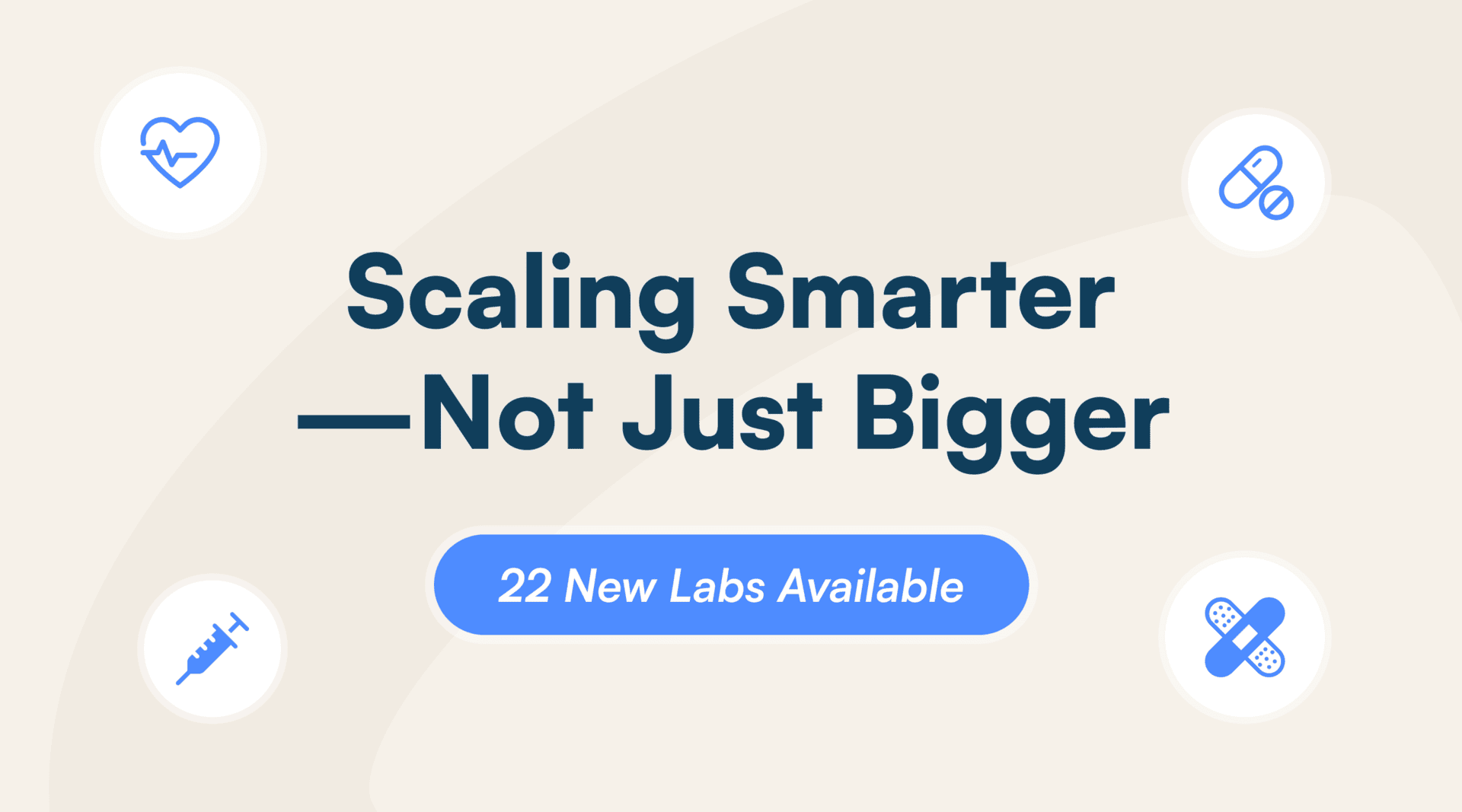
What Clinical-Ready Actually Looks Like (And How to Get There Sooner)
